Monsteras can grow in water, but do you know the best types? The most perfect ones to grow in decorative vases and jars? Discover in this article!
Growing a Monstera in water is a very fun experience, even for those who are new to growing plants. While this amazing houseplant generally prefers soil as a growing medium for long-term growth, some varieties can adapt well to a life partially submerged in water, and from them, we have selected the best Types of Monstera Plants for Growing in Water.
Types of Monstera Plants for Growing in Water
1. Monstera Deliciosa
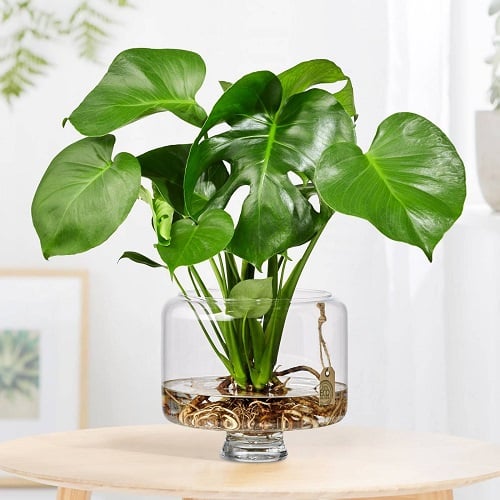
- Ease of Growth: Easy
Your classic monstera, if you love big leaves, it is a must grow in water. You can learn about more such amazing houseplants that grow in water here.
Benefits: It is ideal for people who want a large, statement piece but are hesitant about immediate soil planting. It allows for easy monitoring of root growth.
2. Monstera Adansonii (Swiss Cheese Plant)
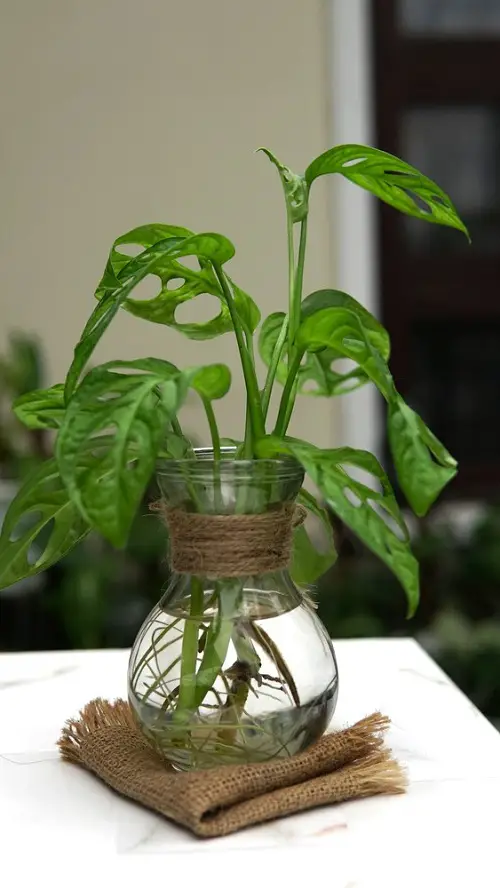
- Ease of Growth: Easy
This compact monstera is a personal favorite and super easy to grow. Submerge a cutting with multiple nodes in water. Change the water weekly.
Benefits: The small leaf size makes it an excellent candidate for water-based growth, especially if space is an issue.
3. Monstera Albo

- Ease of Growth: Easy
If you like colorful and variegated foliage, go for this one! Just ensure it gets plenty of indirect light for the best hues on the leaves.
Benefits: Growing it in water initially can help strengthen the plant before transferring it to the soil.
4. Monstera Siltepecana
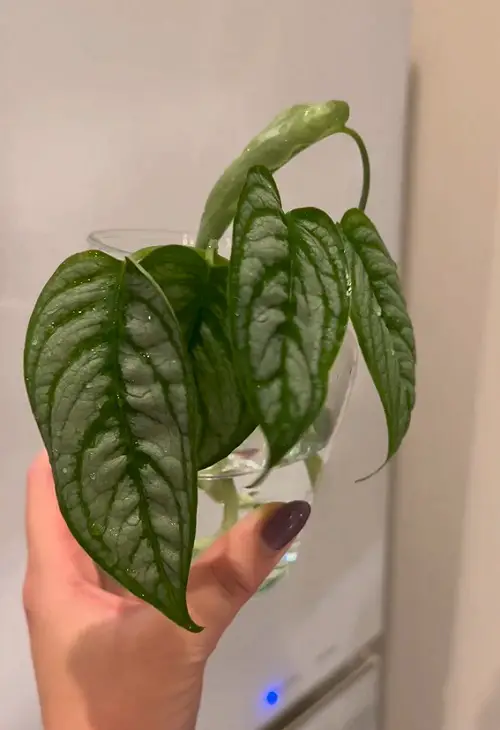
- Ease of Growth: Moderate
A lesser-known variety but also not very difficult to grow. If you have a mother plant growing, take a healthy stem cutting with at least one node to plant in water.
Benefits: It’s a vining plant, so growing it in water reduces its size and makes it more manageable, which makes it perfect for tabletops.
5. Monstera Dubia
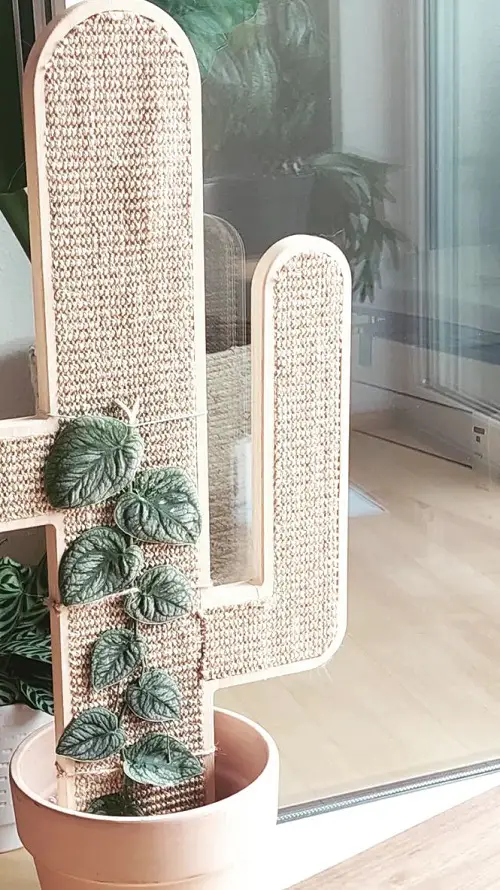
- Ease of Growth: Moderate
Place a cutting with an aerial root into a water-filled vase.
Benefits: Growing in water helps to keep it short.
Do not miss these best monstera varieties list
6. Monstera Standleyana
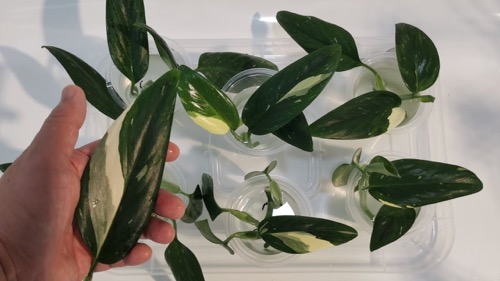
- Ease of Growth: Easy
Known for its beautiful variegation and not-so-typical monstera-like leaves. This houseplant is also worth a try. You can learn more about propagating it in this YouTube tutorial here.
Benefits: Ideal for indoor spaces for adding a dash of greenery in style.
Check out some stunning mini monsteras here
7. Monstera Acacoyaguensis
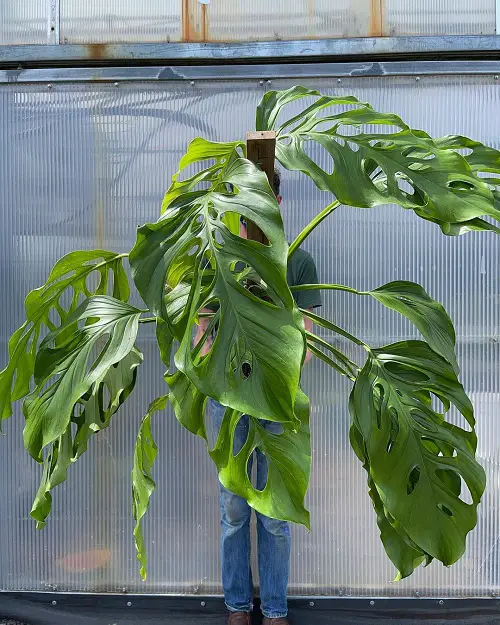
- Ease of Growth: Moderate
A node or section with an aerial root should be submerged in water to have the best centerpiece for your tabletop. Also, you can check out more tabletop DIYs with plants here.
Benefits: The plant’s unique leaf structure is more visibly appreciated when it is grown in a large vase of water.
8. Monstera Lechleriana

- Ease of Growth: Moderate
This stunning split-leaf foliage plant may or may not get such fenestrations when grown in water, but still, it’s worth growing. Check out more plants with amazing fenestrations here.
Benefits: Due to its rarity, growing it in water gives you an easy option to propagate.
9. Monstera ‘Thai Constellation’
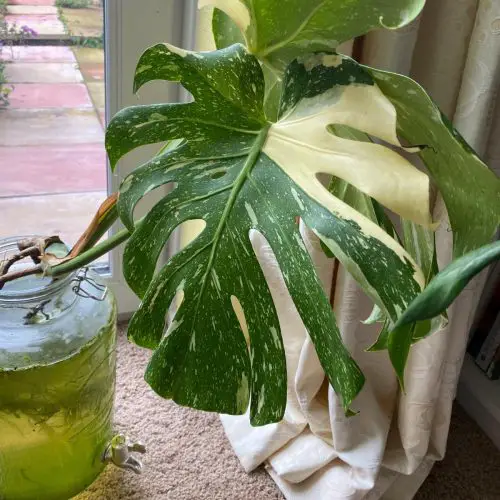
- Ease of Growth: Moderate
One of the most expensive monstera varieties out there; just take its cutting with a node and let it callus overnight before submerging it in water for successful propagation.
Benefits: The creamy variegation offers a different but equally striking aesthetic.
10. Mini Monstera

- Ease of Growth: Easy
Mini monsteras don’t belong to the monstera genus, they are second to none and probably one of the most beautiful houseplants–Rhaphidophora! You can learn about its best varieties here.
Benefits: Very easy to look after and adds an evergreen appeal to the indoor space.
Key Points for Growing Monstera in Water
- Water Quality: Use distilled or rainwater for best results. Do change the water every 3-5 days or whenever it looks cloudy or muddy.
- Container: Choose a glass jar or vase that provides support to the plant stem.
- Nutrients: Add a diluted liquid fertilizer once a month.
- Light: Keep the vase in a location with bright, indirect light.


